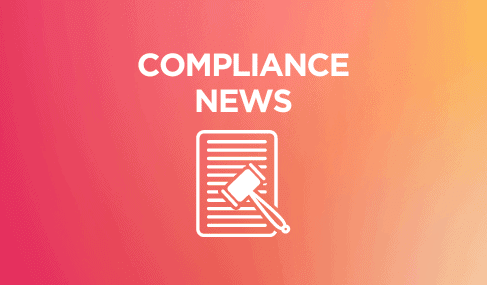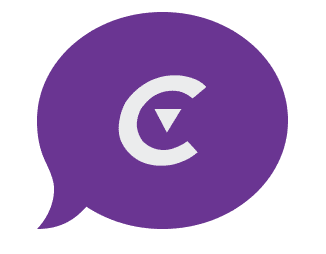
Ahead of the FCC’s much-anticipated March 16 meeting, our friends, the compliance experts at Mac Murray & Shuster’s hosted a webinar to discuss proposed rules affecting robotexts and the so-called “lead generation loophole.”
Partners at the firm, Nick Whisler and Josh Stevens, offered a quick breakdown of these rules and fielded questions from the audience. We’ve got the highlights in the recap below.
The Report and Order on Texting
The first important item under discussion during the webinar was the FCC’s Report and Order pertaining to text messages. Under this proposed rule, the FCC would mandate the blocking of texts deemed highly likely to be illegal as well as those sent from numbers on a Do Not Originate list.
In effect, said Josh Stevens, the FCC is applying the same concept they used initially for voice calls under STIR/SHAKEN and expanding it to cover text messages.
“For example, if a number that a text is purporting to be from is unassigned or unallocated, then there should be no text messages originating from that number because no one should have that number,” said Stevens.
“Also, a subscriber could put a number on the Do Not Originate list and effectively say, ‘I’m never going to send a text message from this number. So, don’t allow texts that are purporting to be from this number.’” This latter example might be used by entities like the IRS, which are unlikely to ever send texts.
A Risk of Blocked Texts
Of course, Stevens said, this method of blocking does come with a potential risk. Just as we’ve seen with call blocking and flagging, it’s possible there could be unintentional or erroneous blocking of texts sent by legitimate entities.
For this reason, mobile wireless providers will be required to have a single point of contact who is publicly known, so that organizations or individuals can reach out and resolve blocking issues.
Because these rules have been included in a Report and Order, the FCC will vote on them at their March 16 meeting. Both Stevens and Whisler anticipate that the initiative will easily be passed, but don’t expect that businesses already proactively supporting compliance will need to change their behaviors.
The NPRM to Close the “Lead Gen Loophole”
At the heart of the webinar was the FCC’s Notice of Proposed Rulemaking (NPRM) that has created quite a buzz across the lead generation industry.
“This piece of proposed rulemaking has the potential to up-end a significant segment of how most businesses collect leads and how they market their goods and services,” said Josh Stevens, underscoring the severity of the agency’s proposal.
In essence, the rules strive to eliminate multi-vertical consent. What does this mean? Consider the way many websites gather leads. With the right consent language that includes a link to a long list of marketing partners and one consent form, sites can generate leads for a huge number of businesses—many of which might not have anything to do with the actual product or type of product that the consumer was looking for in the first place.
What the FCC Is Trying to Change
The FCC apparently feels that this ability has been abused. As a result, Stevens said, they’re looking to amend the definition of prior express written consent to say that a multi-seller lead form is only valid under two circumstances:
One, all of the sellers must be logically and topically associated with the website. “It would probably be hard to argue that, say, solar energy is logically and topically associated with a website where someone is looking for a car loan, right?” said Stevens. “So you’re going to have to really think about if you are a company that generates leads for sellers in different verticals. How does that work with your site? Do you maybe need different sites that could collect those leads depending upon what consumers are looking for?”
Two, partners must be clearly and conspicuously listed on the same page as the form. This would eliminate the ability, in theory at least, to have hyperlinks that lead to the list of marketing partners.
What’s Next
While the above proposal is under consideration, the FCC is also asking for comments on a suggestion that would get rid of multi-seller forms entirely. However, Whisler thinks that the FCC is likely to strike a balancing act based on industry input and its own goals of limiting what it sees as abuses.
This balancing act will be the goal of the comment window likely to follow the March 16 meeting. Unlike the Report and Order on texting, the NPRM on lead generation practices is not yet in its final form.
Instead, at its meeting, the Commission will hold a vote. If approved (which the panel deemed very likely) and once the NPRM is placed in the Federal Register, a 30-day window will commence, during which time industry members and consumers can file initial comments in hopes of influencing the final proposal. In turn, there will be another 30 days open for reply comments.
As Whisler noted, anybody looking for answers on the exact effects of the potential new rules will have to wait until after the comment period when the FCC takes up this business once again at a future meeting. Nevertheless, both Mac Murray & Shuster and Convoso will have plenty of coverage on the matter—including a March 9 webinar hosted by Convoso and M&S Founding Partner Michele Shuster.
Look out for the highlights of that event—and our coverage of the FCC’s March 16 meeting that will be soon to follow.
Get a recap of the latest contact center compliance news delivered monthly to your inbox. Subscribe here >
DISCLAIMER: The information on this page and related links is provided for general education purposes only and is not legal advice. Convoso does not guarantee the accuracy or appropriateness of this information to your situation. You are solely responsible for using Convoso’s services in a legally compliant way and should consult your legal counsel for compliance advice. Any quotes are solely the views of the quoted person and do not necessarily reflect the views or opinions of Convoso.
